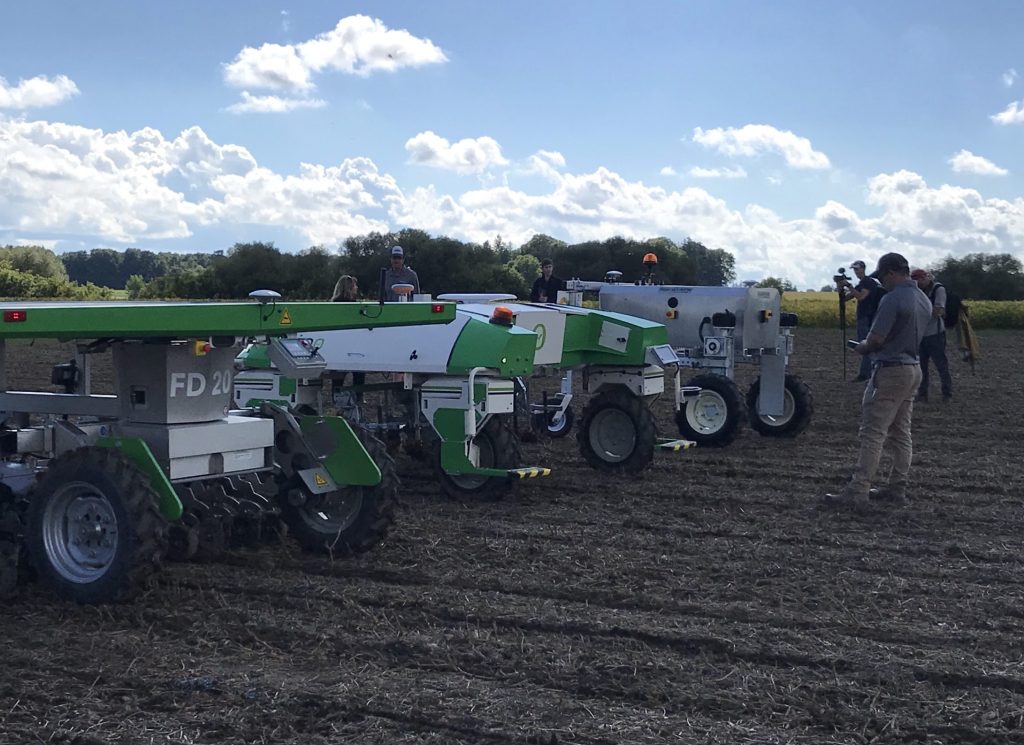
Features
Technology
From the Editor: Finding what fits
November 10, 2022 By Alex Barnard
 Haggerty Creek's ag robotics demonstration at Canada's Outdoor Farm Show. Photo by Alex Barnard.
Haggerty Creek's ag robotics demonstration at Canada's Outdoor Farm Show. Photo by Alex Barnard. Agricultural technology and innovation are occasionally discussed in monolithic terms – as though they are one, uniform thing. The sheer number and variety of different practices, tools, strategies and technologies encompassed in these terms are immense, and growing every year.
For many of the challenges facing the agriculture sector these days, there is (to borrow a phrase) an app for that. Agtech, crop data analysis platforms, automation, robotics: there are a plethora of start-ups and companies stepping up to provide solutions.
However, the innovations provided aren’t always an answer to a current problem; sometimes, they’re a solution in search of a problem.
There can be miscommunications between research and development, extension, and growers. Each group has their own priorities and wants, and they don’t always overlap in neat, puzzle-piece ways.
This rift between what farmers need and what they are given by researchers or tech developers can create misunderstandings and frustration. When you only have one opportunity per year to get the job done right, there’s not a lot of room for trying out the new and untested for the sake of being cutting edge.
It’s much more complex and nuanced than saying yes or no to agtech innovation. As Amy Lemay, research fellow with Brock University’s Niagara Community Observatory, said in a recent interview with our sister publication, Top Crop Manager, “There is a need to recognize that the benefits don’t necessarily apply to all farms, because farms are highly diverse and tend to operate in less controllable environments.
“That some farmers choose not to adopt automation and robotic technologies should not be used as an indicator of their competitiveness. [The data] demonstrate that farmers are very open to adopting innovations that make sense for their operations and are a viable business decision, just not necessarily automation and robotics.”
With innovation essentially a given in modern agriculture, it comes down to finding solutions that fit for you, if they exist, and not feeling pressured to try something for the sake of keeping up with the Joneses.
If you are interested in learning more about agtech – in general or a specific piece of tech or software – it’s worth reaching out to see if anyone else in your region or Canada more broadly has already used it and what they think.
Programs like the AgRobotics Working Group, established in 2021 by OMAFRA’s Kristen Obeid and discussed on page 30, bring together industry, researchers, extension, growers and other stakeholders to evaluate current agtech in an Ontario context, and to determine what is needed in the future.
The options are out there if you’re willing to look, ask questions, and try something new – but there are risks, too. Just be sure they’re ones you can stomach. •
Print this page